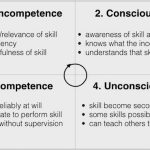Critical Path Analysis Identifies the Activities Necessary to Complete a Task
Critical Path Analysis is an algorithm for scheduling a set of project activities. You will not find the Critical Path Analysis methodology here (!), since there are so many ways to tackle the problems of what has to be done when, before or after what. As you think about organizing your business, you need to make sure of the sequence.
Analysis methodology here (!), since there are so many ways to tackle the problems of what has to be done when, before or after what. As you think about organizing your business, you need to make sure of the sequence.
You can find a simple description from the NetMBA–they call it Critical Path Method, but it’s the same thing. It’s all part of project management–the discipline of planning, organizing, and managing resources to bring about the successful completion of specific project goals and objectives.
A formal critical path analysis, whether using the back-of-the-envelope technique or a highly sophisticated bit of software, I suggest you search for the terms ‘critical path analysis’ or ‘project management’ and choose the method you like best.
When there is a need to control the timing of operations, managers set up schedules: They select jobs to be performed during the production or other processes, assign tasks to work groups, set timetables for the completion of tasks, and make sure that resources will be available when and where they’re needed.
Scheduling Techniques.
There are a number of scheduling techniques. Here are two—PERT and GANTT:
You will see mention of PERT (Program Evaluation Review Technique) diagrams. They are those diagrams with boxes and arrows to show you pictorially what needs to happen. It may be that you will have to make changes all the time. Nothing ever stays the same, most of all your own decision making. Download free PERT Chart software from Edraw.
In the Gantt chart you get sequence, but not dependence, i.e., which task can only be done when one before is complete. That’s when you need a PERT diagram.
GANTT charts are a key tool of project management because you can assign responsibilities, start and finish times and the means of controlling and reminding the people involved. They are a kind of bar chart devised by Henry Gantt in the 1910s.
You can start off with a spreadsheet and capture all the data you need and then transfer the information to a chart. Download a free GANTT chart from the GANTT Project.
In many companies, it’s common for individuals and workgroups to plan and track projects using a patchwork of ad hoc tools—scattering activity details between scratch pads, e-mails, calendars, whiteboards, spreadsheets, and to-do-lists. Having a sense of critical path analysis is very important to the execution of any task, even if you don’t go through the strict critical path analysis process.
As part of your thinking about critical path analysis, it will be a good idea to use a very simple tool: the Milestones and Accountabilities Chart. If you’re having difficulties with critical path analysis, you may find other Helpful Tools on my site that will help you diminish the problems.






